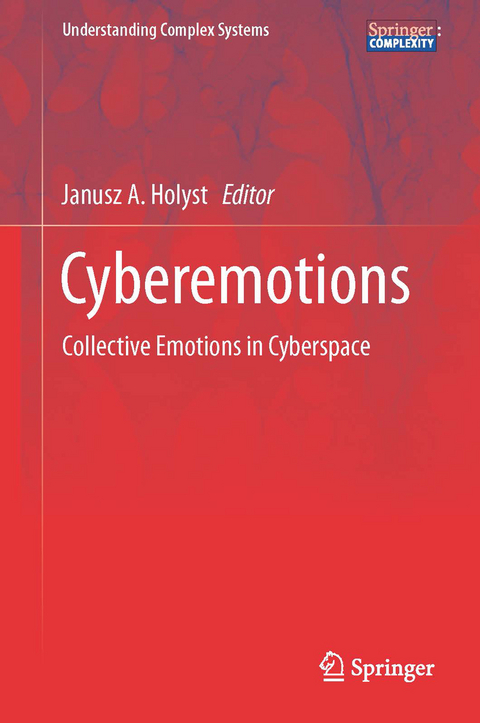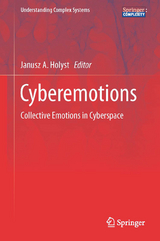Cyberemotions
Springer International Publishing (Verlag)
978-3-319-43637-1 (ISBN)
This first monograph of its kind introduces the reader to fundamental definitions, key concepts and case studies addressing the following issues of rapidly growing relevance for online communities: What are emotions? How do they emerge, how are they transmitted? How can one measure emotional states? What are cyberemotions? When do emotions and cyberemotions become collective phenomena? How can one model emotions and their changes? What role do emotions play for on-line communities?
Edited and authored by leading scientists in this field, this book is a comprehensive reference for anyone working on applications of complex systems methods in the social sciences, as well as for social scientists, psychologists, experts in on-line communities and computer scientists.
This book provides an excellent overview of the current state-of-art in research on collective emotional interactionsmediated by the Internet. It introduces a reader in social phenomena occurring in cyberspace, algorithms needed for automatic sentiment detection and data driven modeling of emotional patterns observed in on-line groups.Eugene Stanley, Professor, Boston UniversityWith the explosive hyper-exponential growth of the internet suddenly new ways of communication are emerging that give rise to a digital 'Homo empathicus', each of us suddenly being able to share thoughts and feelings with millions if not billions of others. This book is a true treat, a timely milestone that gives us insight in the co-evolution of the way we interact with each other and the communication technology provided through this new seemingly endless flexible digital world. Prof. Holyst did a great job bringing together real experts in the field of cyber emotions.Peter M.A. Sloot, Professor, University of Amsterdam, the Netherlands, Nanyang University, Singapore
The book Cyberemotions embraces the topic of emotion studies in cyberspace from a very rich spectrum of points of view and applications. It is particularly interesting reading the theoretical foundations underlying the concepts of cyberemotions and how these concepts can be captured, modeled and implemented in real-time applications.
Catherine Pelachaud, Director of Research CNRS at LTCI, TELECOM ParisTechLogical machines give us a chance to analyze our often illogical behaviors, especially in the vast meadows of the cyberspace. In this important book, authors of different backgrounds present a wide and deep image, not only of methods of analyzing our emotional behavior online but also how the computers can help to break communicational wallsthe same technology had built.Rafal Rzepka, Professor, Hokkaido UniversityIntroduction to Cyberemotions.- Part I Foundations.- Part I Foundations.- Part III Modeling.- Part IV Applications.
| Erscheinungsdatum | 30.11.2016 |
|---|---|
| Reihe/Serie | Understanding Complex Systems |
| Zusatzinfo | XIV, 318 p. 90 illus., 34 illus. in color. |
| Verlagsort | Cham |
| Sprache | englisch |
| Maße | 155 x 235 mm |
| Themenwelt | Mathematik / Informatik ► Informatik ► Theorie / Studium |
| Naturwissenschaften ► Physik / Astronomie ► Theoretische Physik | |
| Sozialwissenschaften ► Soziologie ► Empirische Sozialforschung | |
| Schlagworte | Collective Online Social Dynamics • Computer Appl. in Social and Behavioral Sciences • Cyberemotions Introduction • Data-driven Science, Modeling and Theory Building • Emotion Visualisation • Human-computer Emotional Interactions • information systems applications (incl. internet) • Interactive Affective Systems • Media Sociology • Online Sentiment Detection and Analysis • Physics and Astronomy • Psychology of Cyberspace • Psychology Research • Societal Aspects of Physics • Socio- and Econophysics, Population and Evolutiona |
| ISBN-10 | 3-319-43637-6 / 3319436376 |
| ISBN-13 | 978-3-319-43637-1 / 9783319436371 |
| Zustand | Neuware |
| Haben Sie eine Frage zum Produkt? |
aus dem Bereich





